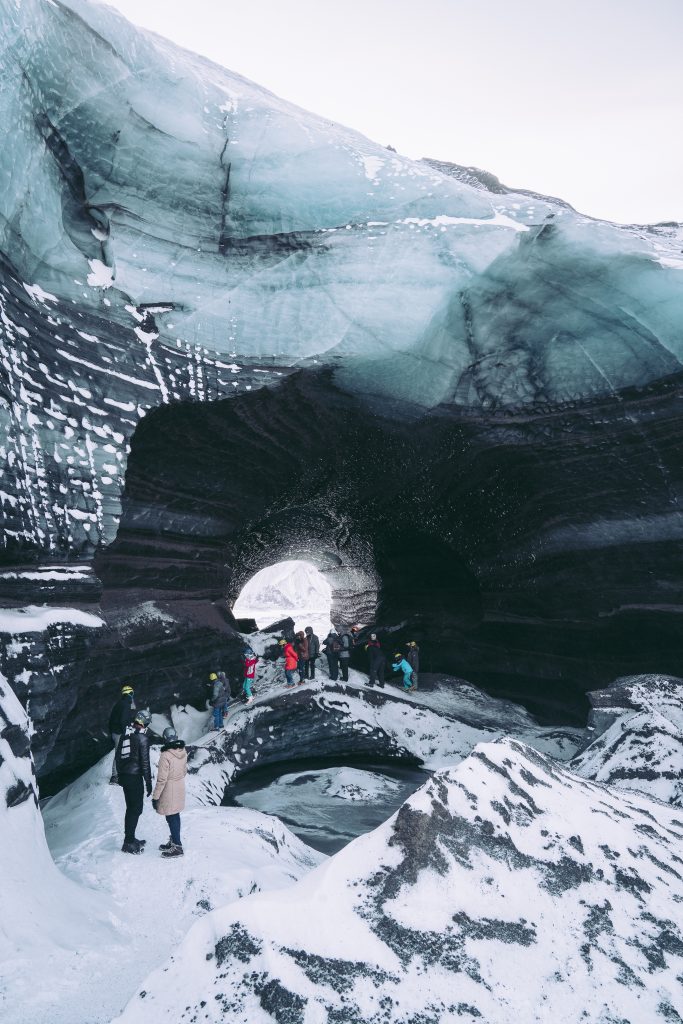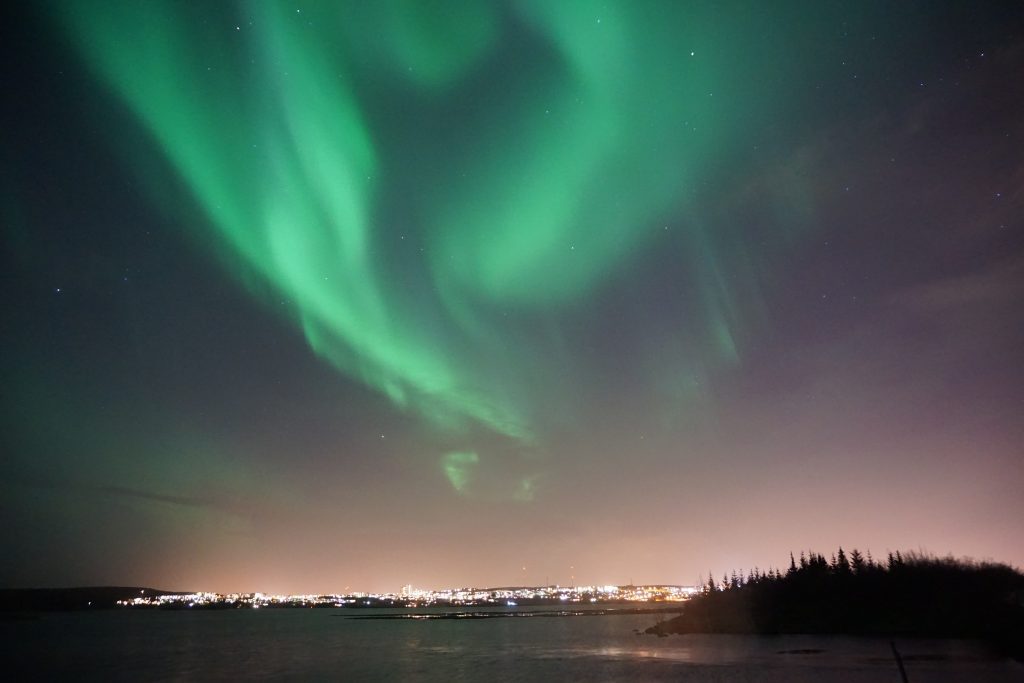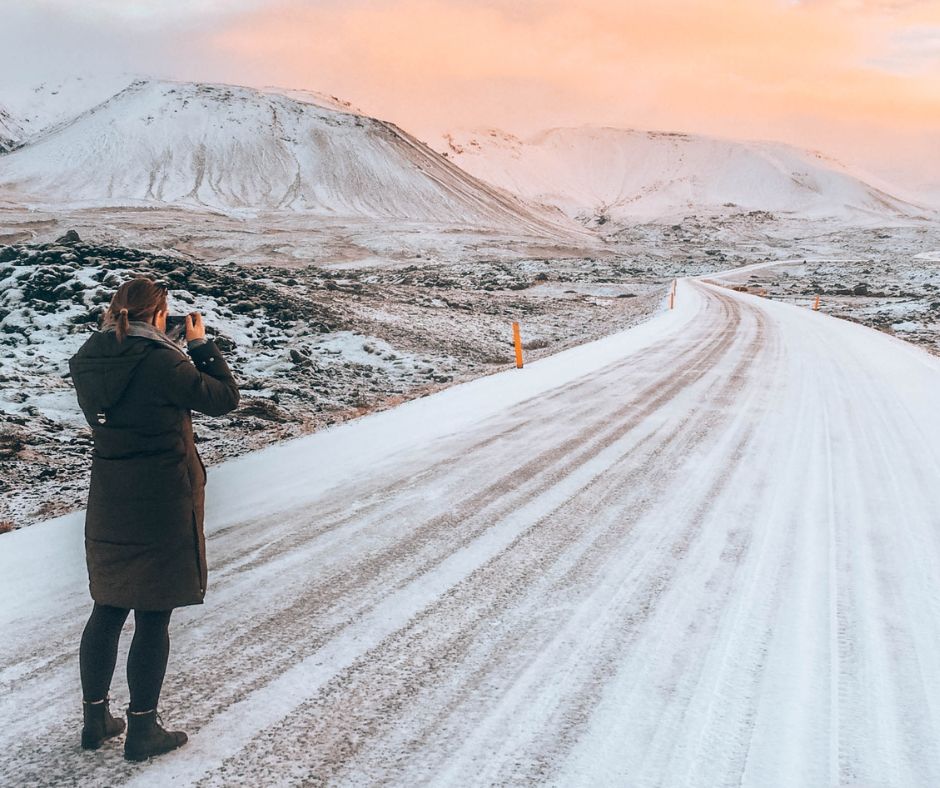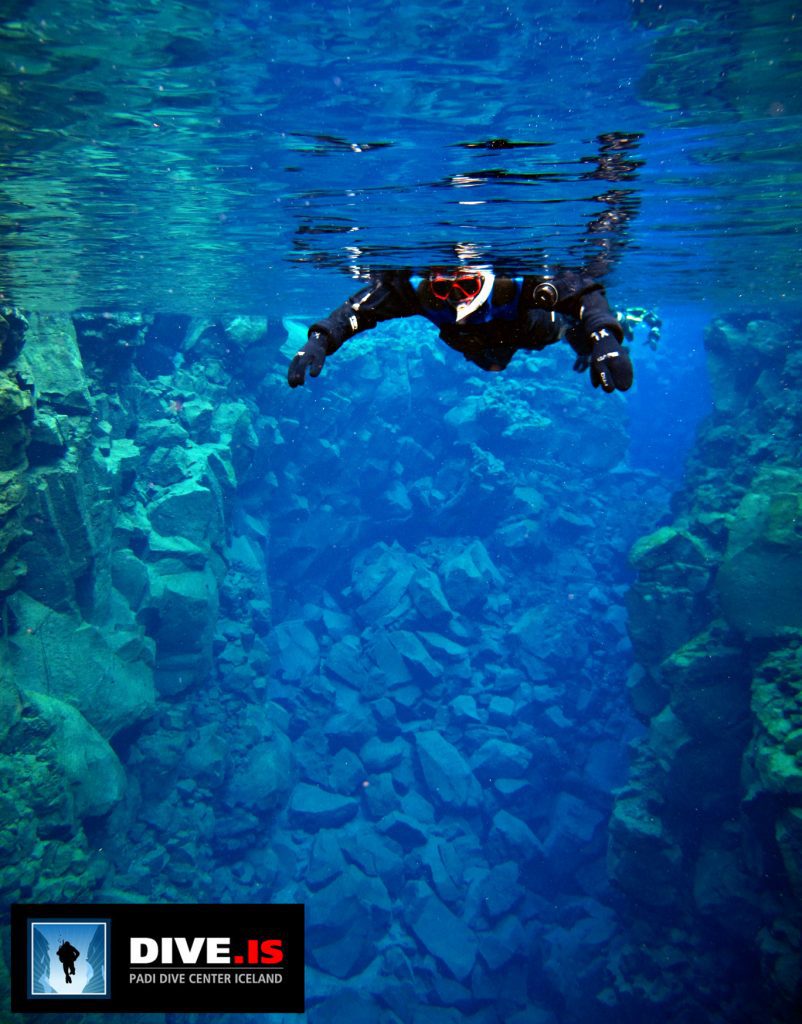Iceland claims bragging rites to glaciers, caves, and crevasses. The best time to visit ice caves in Iceland is from November until March, even into early April. The ice caves in Iceland are incredible and as far as I’m concerned a definite MUST SEE! These formations created by Mother Nature really showcase the power of water and temperature and are constantly changing. This means when you see photos of them, often by the time you get there in person – they may look entirely different.
Accessibility to glaciers and ice caves is directly impacted by weather or changes in seismic activity, but still very much worth the effort to see. There are a lot of different ways you can get to see an ice cave and the best and safest way is with a qualified tour operator. Learn more about them in my guidebooks, experience them in my itineraries, or book a tour of your own to experience the thrill of walking through a cave of ice and volcanic ash!
Can I visit the ice caves in winter?
Ice caves are typically available for touring from November through March. Planning a visit to an ice cave with a guide is the safest and best way to experience them. These glaciers and caves are beautiful, and using a guide who knows all the ins and outs of the ever-changing terrain, the weather, and best safety practices will ensure a good and safe experience. As a rule, glaciers are constantly moving and changing, which means the location of the ice caves could vary from year to year – making the guided tour experience ideal.
One of my favorites is an ice cave located in the Kötlujökull Glacier, which is an outlet of the Mýrdalsjökull glacier. This one is so unique because under the glacier is the mighty volcano Katla. The beauty of the ice cave lies in the really impressive mix of ice and the volcano’s ash. The combination of the winter sky illuminating pink and orange against the ice can leave one feeling awestruck and stunned at the same time.

Can’t you just imagine being in one of these caves? To be able to reach out and touch ice and ash that has taken years and years to form? I mean…WOW…well, now that I have piqued your interest let’s learn more about ice caves.
What is the difference between ice caves and glacier caves? Caves formed in rock that contain ice all year-round are called ice caves. These caves may have massive ice formations on the cave floors, walls, and ceilings. Ice caves that form in a block of ice are called glacier caves. Meltwater moving through glaciers creates this type of ice cave.
Travelers can visit the ice caves during the winter months (typically November through March). These ice caves are well insulated, with constant temperatures reflecting the average temperature of the region where they have formed. Higher summer temperatures or the winter lows have almost no effect in these underground formations. In some instances, the shape of cave passages may make a trap for the cold air that sinks into the tube in the winter and remains cold through the summer. (National Park Service)
Fun Fact: With winter conditions and the fact that you are in an ice cave, I recommend getting a lopapeysa (lo-pa-PEY-sa.). These traditional Icelandic sweaters (made with Icelandic sheep’s wool) is unique in that it contains two different types of hair that are a natural barrier from wet and cold weather. The outer layer is composed of course, long hair known in Icelandic as tog. The tough and fleecy tog is a water-resistant layer. Underneath the tog is a layer of short hair, known in Icelandic as þel. Double layer and double toasty warm!

Why are glaciers blue?
Let’s start with, “What is a glacier?” According to the U.S. Geological Survey, USGS.gov, A glacier is a large, perpetual accumulation of crystalline ice, snow, rock, sediment, and often liquid water that originates on land and moves downslope under the influence of its own weight and gravity. Over multiple decades this continuing accumulation of snow results in the presence of a large enough mass of snow for the metamorphism from snow to glacier ice process to begin. Glaciers are classified by their size (i.e., ice sheet, ice cap, valley glacier, cirque glacier), location, and thermal regime (i.e., polar vs. temperate). Glaciers are sensitive indicators of changing climate.
So, why is ice blue on glaciers? It all boils down to science and chemistry. Glacier ice is blue because the red (long wavelengths) part of white light is absorbed by ice and the blue (short wavelengths) light is transmitted and scattered. So, the longer the path light travels in ice, the bluer it appears.
Over long periods of time, glacier ice is buried under new layers of ice and snow. These heavy layers press the air out of the deeper layers of ice. This removes much of the air and causes the ice to form large, dense crystals. When light hits these crystals, they absorb long wavelengths of light. At the same time, they scatter short-waved blue light, which makes the ice appear blue. We can only see that blue color when we see the deeper layers of ice. This happens along the leading edge of the glacier, where the ice is calving or breaking apart. (Woods Hole Oceanographic)
I checked off a bucket list item when I experienced the Skaftafell Blue Ice Cave Tour and Glacier Hike and it was so awesome. You’ll be walking on what’s called Skaftafellsjökull which is one of the glacier tongues that comes down off the main Vatnajökull Glacier, the biggest glacier in Europe. Book a tour for and see it for yourself!
Best ice caves in Iceland
These spectacular and naturally created caves offer unique and unforgettable experiences:
- Katla Ice Cave in Mýrdalsjökull Glacier is the closest ice cave to Reykjavík, just 42 miles west of the capital. This ice cave is in the Kötlujökull Glacier, which is an outlet of the Mýrdalsjökull glacier and the powerful volcano Katla is right under the glacier. The Katla Cave is available to visit all year round!
- Langjökull Ice Cave. Located in the western part of Langjökull (Long Glacier) and 1,260 meters above sea level, this ice cave stretches deep underground, giving visitors the chance to see ice that’s been forming over centuries. A special area in the cave, which developers named the “chapel,” with blocks of LED-lit blocks of ice supporting wooden beams, will serve as a venue for parties, weddings, and concerts, says Sigurdur Skarphedinsson, managing director of Into the Glacier. “Some might call it the ultimate wedding venue.” The ice cave, which consists of tunnels and caves that stretch 500 meters into solid glacial ice, is an awe-inspiring accomplishment and one that requires ongoing year-round maintenance.
- Crystal Caves are the ‘ice blue cave’ located in the Vatnajökull glacier. The Crystal Cave is arguably the best-known and most requested cave to tour. Its landscape and space are ever-changing, like many of the caves in Iceland. However, it is very easy to access. The cave looks like a crystal dome, giving it its name.
- Breiðamerkurjökull is an outlet glacier of the larger glacier of Vatnajökull and a piedmont glacier in the southern part of Vatnajökull National Park, Iceland. Emerging as a tongue of the Vatnajökull, it ends in a small lagoon known as Jökulsárlón. Unfortunately, it is mostly unstable and unpredictable so it is not advisable to tour it.

A vacation experience like no other.
Stepping into an ice cave or glacier cave is otherworldly and almost magical. You are surrounded by 360 degrees of ice, blue ice, and ice with volcano ash and snow, all creating a wonderment of how this was formed and how small humans are in comparison to nature. It can be breathtaking, flat out jaw dropping but also something I truly feel everyone who visits Iceland simply must experience.
I invite you to explore my videos of Iceland’s ice caves and I just know you will end up adding one or two of them to your top 5 Must See’s when you are in Iceland. What are you waiting for?

Resources: National Park Service, USGS.gov, cnn.com, Wikipedia,







